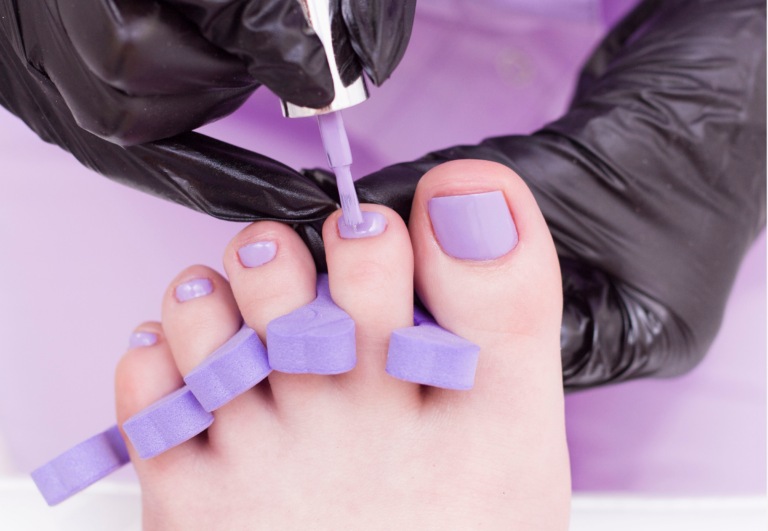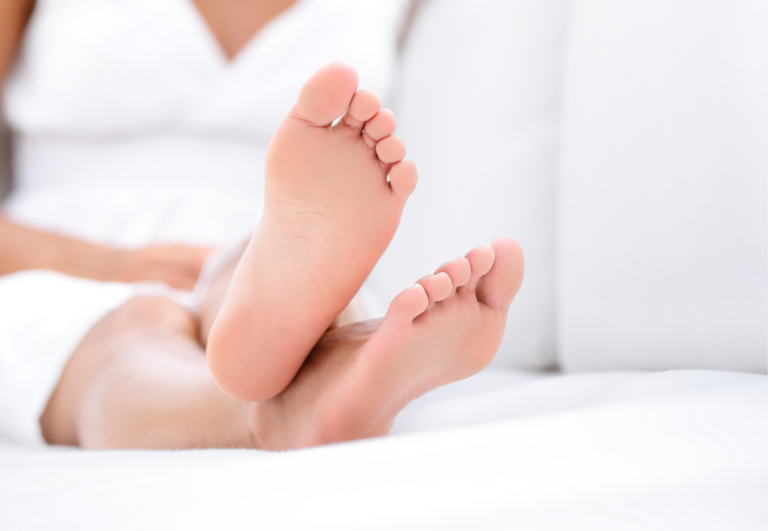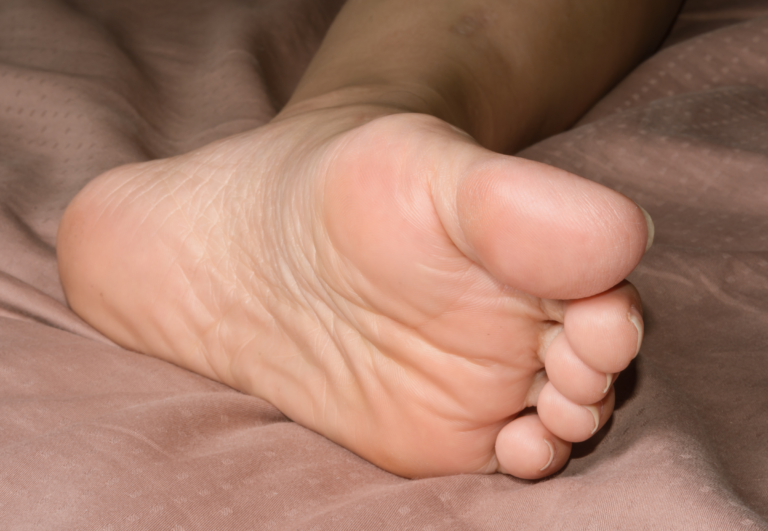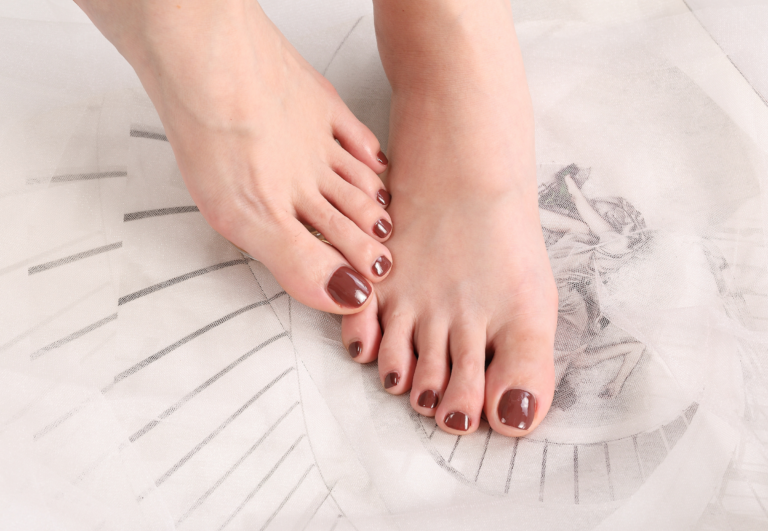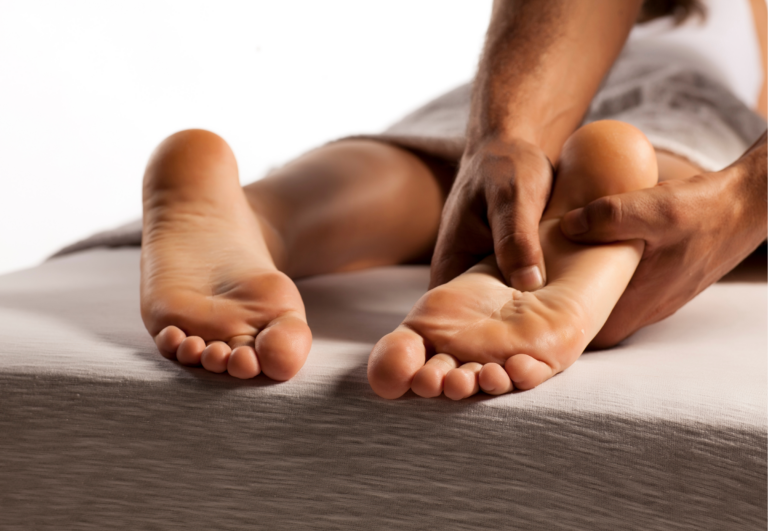Using Toe Spacers to Reduce Discomfort in High Heels: Quick Guide
High heels can be a stylish addition to an outfit, but they often come at the cost of comfort. Like many who enjoy fashion, I’ve felt the pinch and pain after a day spent in heels. It’s no surprise that these shoes can lead to discomfort, as they often force our feet into unnatural positions. When worn frequently or for extended periods, the elevated heel height can contribute to foot pain, making it a challenging choice for those who prioritize both style and foot health.
This is where toe spacers become valuable. They are simple, non-invasive tools that I find useful in mitigating some of the discomforts associated with high heels. Used regularly, toe spacers can help alleviate pressure between the toes and improve foot alignment, which can be disrupted by narrow toe boxes common in high heels. They work by stretching and separating the toes, promoting a more natural toe spread which can counteract the compression often experienced when wearing heels.
As an avid user of toe spacers, I’ve noticed that they can provide substantial pain relief, especially after long hours in heels. While they’re not a cure-all, incorporating toe spacers into a routine may benefit those who experience foot discomfort from high heels. It’s a simple step that can make wearing your favorite high heels a more comfortable experience.
How To Use Toe Spacers to Reduce Discomfort in High Heels
Using toe spacers while wearing high heels can help to reduce discomfort in several ways:
1. Alleviating Pressure
High heels often force the toes into a narrow space, causing them to compress. Toe spacers can help distribute this pressure more evenly across the toes, reducing the risk of pain and blisters that result from toes rubbing against each other or the sides of the shoe.
2. Improving Alignment
Toe spacers assist in maintaining proper toe alignment, which can be compromised in high heels. By keeping the toes straight, the spacers can prevent the formation of bunions and hammertoes, common issues that arise from wearing tight and constricting footwear.
3. Enhancing Balance
High heels can shift body weight onto the balls of the feet, leading to instability. Toe spacers can provide a better foundation by encouraging the toes to spread naturally, which can improve balance and reduce the strain on the feet.
4. Increasing Comfort
By separating the toes, spacers can prevent the discomfort that comes from the friction of toes pressing against one another. This small adjustment can make a significant difference in overall foot comfort, especially when standing or walking in high heels for extended periods.
While toe spacers can offer some relief, it’s important to remember that they are not a complete solution to the discomfort caused by high heels, which can lead to a variety of foot problems over time.
It’s advisable to limit the duration and frequency of high heel use, choose heels with a more comfortable design, and take breaks to stretch and rest your feet throughout the day.
The Benefits of Using Toe Spacers with High Heels
Toe spacers can be a game-changer for high heel wearers, providing comfort and support that addresses common foot discomforts.
Alleviating Common Foot Conditions
Wearing high heels often leads to foot pain, but toe spacers can help. They may reduce discomfort from bunions, corns, and calluses by:
- Separating toes: This prevents them from overlapping, reducing skin irritation and the formation of corns and calluses.
- Improving alignment: Proper toe spacing can decrease pressure on bunions, mitigating pain and soreness.
By integrating toe spacers into your routine, you’re taking a step toward happier, healthier feet, even in heels.
Improving Balance and Stability in Heels
High heels challenge your foot’s natural position, but toe spacers can boost your balance and stability. They benefit wearers by:
- Enhancing foot grip: Spacers prevent toes from crowding, allowing for a stronger base in your footwear.
- Promoting natural foot posture: Maintaining toe alignment can improve overall balance while wearing heels.
Incorporating toe spacers not only elevates comfort but also supports a more stable, confident stride in your favorite high heels.
Proper Sizing and Fit for Optimal Comfort
Ensuring that your toe spacers are properly sized and fit comfortably is key to maximizing the benefits they offer, especially when combating the discomfort caused by high heels with narrow toe boxes.
Sizing Guidelines for Different Foot Shapes
For Wide Feet:
- Choose toe spacers designed for larger toe boxes.
- Size: Must be wide enough to prevent excessive pressure on your big toe.
For Narrow Feet:
- Select thinner models that can fit snugly in narrow high heels.
- Size: Smaller spacers that align toes without forcing them against the shoe walls.
Adjusting to Toe Spacers for Increased Effectiveness
- Initial Use: Start with 10-15 minutes a day to allow your feet to adapt.
- Progression: Gradually increase usage time as your toes become accustomed to the spacers; aim for consistent daily use.
Incorporating Toe Spacers into Your Routine

Toe spacers are an essential tool in my kit to mitigate the discomfort caused by high heels. Through personal experience, I’ve learned that they enhance foot strength and improve overall toe alignment.
Daily Activities and Enhancing Foot Strength
During daily activities, I make it a point to prioritize my foot health. While walking or engaging in activities such as yoga, I incorporate stretches that benefit my toes. I’ve found that toe spacers are particularly useful during yoga sessions, known as yoga toes, which emphasize the strength and flexibility of the feet. For athletes, toe spacers play a role in both performance enhancement and recovery. Wearing toe spacers while performing foot strengthening exercises helps in improving circulation and provides a solid foundation for overall strength.
When to Wear Toe Spacers: From Workouts to Bedtime
Workouts: It’s beneficial to wear toe spacers during cool-down stretches to aid recovery.
At Home: Slip them on while doing chores or relaxing for consistent alignment correction.
Sleeping: To maximize benefits, I often wear a soft pair of toe spacers in bed for extended stretching.
Table: Optimal Times to Wear Toe Spacers
| Activity | Time Frame | Purpose of Use |
|---|---|---|
| Post-Workout | 20-30 minutes | Aid in recovery and stretch muscles |
| Relaxing at Home | 1-2 hours | Continuous alignment and foot health |
| Sleeping | Overnight | Alleviate pressure & improve posture |
Consistent use is key. A simple approach to integrating toe spacers includes wearing them with socks during daily routines, ensuring regular use without disrupting your day.
Consulting with Professionals for Personalized Advice
When considering toe spacers to mitigate the discomfort of high heels, it’s crucial to seek expert advice to ensure they’re suitable for your specific needs. The right guidance can prevent injury and provide custom alternatives that fit your lifestyle.
When to See a Podiatrist for Toe Spacing Needs
If you’re experiencing persistent foot pain or discomfort when wearing high heels, it may be time to consult a podiatrist. These medical professionals specialize in foot care and can assess whether your discomfort is due to a more serious issue like a misalignment or injury that may require medical devices or orthotics. A visit to the podiatrist may include:
- Evaluation: An assessment of your foot shape, toe alignment, and gait.
- Diagnosis: Identifying underlying conditions such as bunions or hammertoes.
- Recommendation: If toe spacers are appropriate for you, and advice on proper use.
Listen closely to their recommendations, and never hesitate to ask for clarity on any suggested devices or treatment plans.
Custom Solutions and Alternatives to Toe Spacers
Not all feet are the same, and sometimes, ready-made toe spacers may not provide the relief you need. In such cases, podiatrists can offer custom solutions. They might involve:
- Custom Orthotics: Tailored to your feet, providing targeted support where it’s needed.
- Alternative Devices: Other forms of foot support that may work better for your situation.
A foot surgeon or other medical professional should be involved if surgical intervention is suggested as a long-term solution. Remember, while toe spacers can give temporary relief, they’re not a cure-all for foot problems exacerbated by high heels.
Toe Spacers and Their Materials
Toe spacers, crucial for those wearing high heels, can alleviate discomfort by promoting proper toe alignment. The materials used for these spacers are key to their effectiveness and comfort.
Silicone Vs Gel Vs Foam: Comparing Spacer Materials
- Silicone: This material is durable and flexible, providing a firm yet comfortable separation between toes. It adapts well to the shape of the foot, which is essential for high-heel wearers who need a snug fit to prevent the spacers from shifting. Silicone is often washable and reusable.
- Gel: Gel toe spacers are known for their cushioning effect, offering a softer comfort compared to silicone. This material is best for users who have sensitive toes or require more gentle correction.
- Foam: Foam spacers are the softest and most pliable option, ideal for temporary relief. However, they may not provide the same level of correction as silicone or gel spacers and tend to wear out more quickly.
| Material | Durability | Comfort Level | Corrective Ability |
|---|---|---|---|
| Silicone | High | High | High |
| Gel | Medium | Higher | Medium |
| Foam | Low | Medium | Low |
Medical-Grade Materials and Their Importance for Foot Health
Medical-grade materials in toe spacers are crucial because they ensure the product is safe for skin contact and does not trigger allergic reactions. Medical-grade silicone and medical-grade gel are often hypoallergenic and free from toxic substances.
These materials maintain their structural integrity over time, which means they perform consistently in correcting toe alignment and thus, in reducing discomfort from high heels. Wearing medical-grade spacers can prevent the formation of blisters or calluses often associated with tight-fitting shoes.
